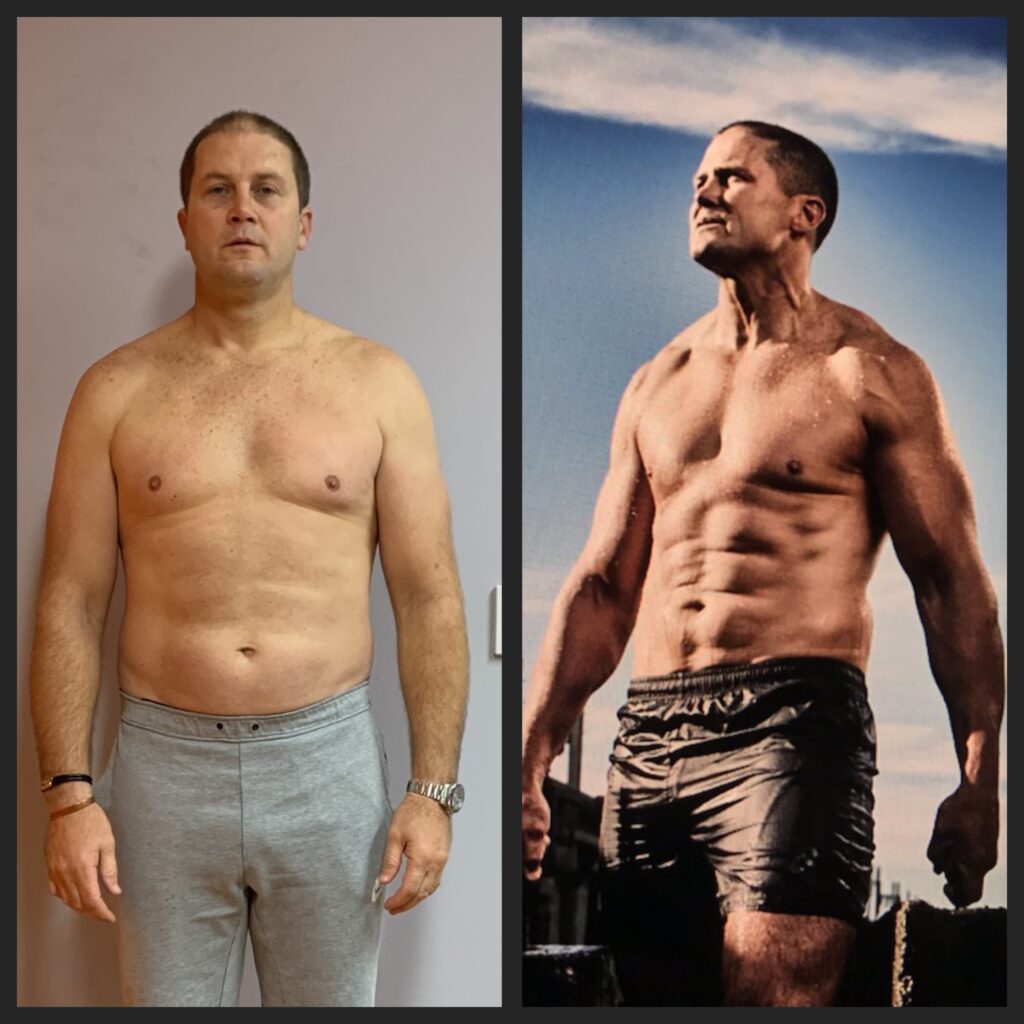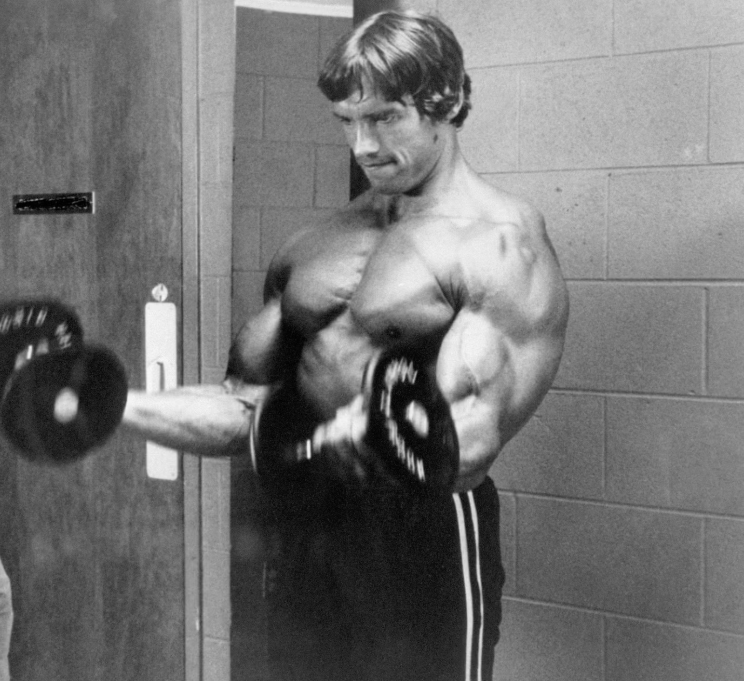BUILDING OUR DELTS can be a challenge, especially when biceps training tends to take priority (we get it). However, by including the right exercises, and a few of the best techniques and tweaks, we can have our cake and eat it too.
Exercise researcher Dr Mike Israetel is joined by bodybuilder Jesse James West and trainer Jared Feather on his YouTube channel to deliver a scientific delt and arm workout. West explains that he struggles to grow his delts, so the workout is specifically designed to bring up lagging muscles.
Israetel explains, “For everyone out there, if you want big delts, you want to be a presence and have that nice broad look, training lateral delts and rear delts a little bit is the key to that.” He gives the best tips and tricks in order to work your delts to get the best results.
The workout

1/ Machine lateral raise with myo-rep matching
Israetel recommends beginning with a lateral raise machine, following the myo-rep matching protocol to ensure progressive overload. This can also be subbed for dumbbell lateral raises if you don’t have access to a machine.
‘Here’s what we’re going to do first,’ says Israetel, “We are going to do the Icarian, which is a machine straight from the 1980s.”
Exercise protocol:
- 5-25 reps to failure
- 2 additional sets, matching the reps from the first set
- Rest-pause method: take 5-second rest breaks if necessary to complete the reps
- End with an isometric hold: hold the weights at the top position above parallel for as long as possible to engage fast-twitch muscle fibres
Israetel explains the reasons behind an isometric hold: “The isometric contraction is not the most likely to be the most muscle growth-promoting kind of contraction, versus eccentric and concentric. But it still conveys a muscle growth stimulus. And when you’re at the end of your ability to exert yourself concentrically, you have options.”
Israetel recommends: Lean slightly forward and focus on strict form: no momentum. Prioritise lateral delts by ensuring a high elbow positioning.

2/ Hang muscle snatch
This exercise combines elements of an upright row and overhead press, effectively targeting the lateral delts and front delts. Or as Israetel puts it, “This lift is really a bastardised version of an Olympic weightlifting lift called the muscle snatch. The hang muscle snatch is kind of a trippy movement. You don’t see it a lot. It’s like an old-timey movement from like 1915,” says Israetel.
“It requires the recruitment of your side delts and makes them nice and tired on the upright row component, and then they tend to be the limiting factor in the press.”
Exercise protocol:
- 3 x 10-12 reps
- Myo-rep match technique: match reps across all three sets, using short rest breaks if needed
- Control the eccentric portion, slowly lowering the weight
Israetel recommends: Keep the bar close to the face on the way up, finishing with a strong press overhead. This movement ensures both side and front delts are engaged.

3/ Overhead triceps extension (behind the head)
To prioritise long head triceps development, Israetel programmes a deep-stretch overhead extension with a controlled eccentric phase. ‘So, Jesse doesn’t know this yet, but we’re going to have him do behind-the-neck tricep extensions,’ says Israetel. “We want his elbows to come really far forward so at the bottom his upper arm is pretty close to parallel to the floor.
“At the end of each set, we’re going to have Jesse do a little cheating. When Jesse’s gassed out and he can’t move it himself, we’re going to have him push from his legs and that pushing is going to let him finish the concentric,” he explains, “Then the eccentric is going to have to control it slow for a few extra repetitions.”
Exercise protocol:
- 3 x 10-12 reps
- Final reps include eccentric overload: use slight leg drive to push the weight up, then lower it slowly under control
Israetel recommends: Keep the elbows in throughout the movement, pressing the weight slightly back rather than straight up to maintain tension on the long head of the triceps.

4/ Push-up mechanical drop set
This bodyweight finisher adds extra volume and metabolic stress for both the shoulders and triceps. Israetel says, “Jesse is going to drop to his knees and do push-ups. No full lockouts, because that’s how you get rest. All the way down to the ground, gentle touch of the chest, and then up two-thirds, then down slow.”
He explains, “The brutality of that constant application of tension, it’s not just the constant tension during the rep, it’s the fact that multiple reps add up, skyrocketing the metabolites, which may or may not grow muscle themselves, but they make your fastest twitch motor units – the big ones, the ones that grow – have to wake up and be like ‘help us out!'”
Exercise protocol:
- Push-ups to failure with partial lockouts (avoid fully extending to keep tension on the muscles)
- Drop to knees once full-range push-ups are no longer possible
Israetel recommends: Maintain a slow eccentric descent and avoid resting at the top of the movement to maximise metabolic stress.

5/ Decline dumbbell curls (clown curls)
A unique variation designed to maximise stretch-mediated hypertrophy in the biceps, Isaetel says this exercise works because we know two things: that the stretch, length, and tension produces lots of muscle growth.
‘We also know that gravity unfortunately only points in one direction,’ he says, ‘which is down. At the bottom of this movement, Jesse is going to combine a maximum stretch on his bicep and get really close to parallel to the ground with his arm, which means that he gets the best of both worlds.’
Exercise protocol:
- 3 x 15-20 reps
- Control the eccentric, pausing in the stretched position at the bottom
- Final reps involve reaching towards the heels to extend the range of motion
Israetel recommends: Perform these on a decline bench to increase resistance in the stretched position, ensuring maximal bicep activation.
This article originally appeared on Men’s Health UK.
Related:















